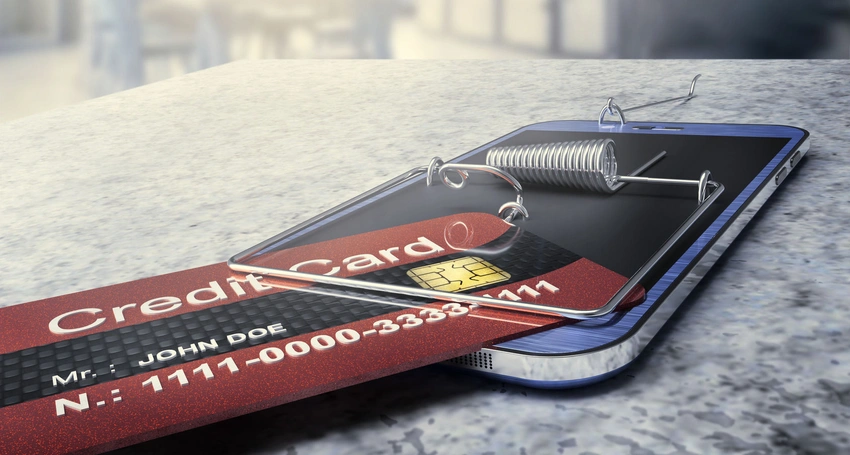
Key Takeaways:
- Carrier fraud, also known as telecommunications fraud, is a growing concern that can have serious implications for businesses and individuals.
- Advancements in technology, potential financial gain, and lack of awareness contribute to the rise of carrier fraud.
- Techniques used by carrier fraudsters include International Revenue Share Fraud (IRSF), Wangiri fraud, and Sim box fraud.
- Industries targeted by carrier fraud include banking and financial services, telecom service providers, and small businesses.
- Recognizing warning signs such as unexplained charges, increased call volumes, and SIM swapping is crucial for identifying carrier fraud.
- Protecting against carrier fraud involves staying informed about the latest techniques, implementing two-factor authentication, and securing mobile devices.
- If carrier fraud is suspected, immediate action should be taken by contacting the service provider, filing a police report, and working with the carrier to recover from the fraud.
- To restore personal and financial security, review accounts and statements, contact banks and issuers for fraudulent transactions, change passwords, and monitor accounts and credit reports regularly.
1. Understanding Carrier Fraud: An Insider’s Look

Carrier fraud, also known as telecommunications fraud, is a growing concern that can have serious implications for businesses and individuals alike. This form of fraud occurs when criminals exploit vulnerabilities in the telecommunications network to make unauthorized charges or gain access to sensitive information. Understanding the reasons behind the rise of carrier fraud and the techniques used by fraudsters can help you protect yourself and your business from potential harm.
Why is Carrier Fraud on the Rise?
There are several factors contributing to the increase in carrier fraud. First, advancements in technology have made it easier for fraudsters to exploit weaknesses in the telecommunications network. With the widespread use of mobile devices and the growth of the Internet of Things (IoT), there are more entry points for criminals to target.
Second, carrier fraud can be highly lucrative for criminals. They can make unauthorized charges to victims’ phone bills or gain access to valuable personal and financial information. With the potential for significant financial gain, it’s no wonder that carrier fraud has become an attractive option for criminals.
Lastly, carrier fraud often goes unnoticed or unreported. Many victims may not even realize they have been targeted, especially if the fraudulent charges are small or if they do not regularly review their phone bills. This lack of awareness makes carrier fraud an appealing option for criminals.
Unraveling the Techniques Behind Carrier Fraud
Carrier fraudsters use a variety of techniques to carry out their illegal activities. One common technique is known as International Revenue Share Fraud (IRSF), where fraudsters manipulate the telecommunications system to generate revenue that they can then pocket. They do this by setting up premium-rate phone numbers and directing traffic to these numbers through illegal means.
Another technique used by fraudsters is known as Wangiri fraud, which involves missed call scams. Fraudsters make short calls to random numbers and then immediately hang up. The unsuspecting victims see a missed call notification and call the number back, often unknowingly connecting to a premium-rate phone number and incurring significant charges.
Sim box fraud is another prevalent technique used by carrier fraudsters. In this type of fraud, criminals use SIM boxes to route international calls through local phone numbers, bypassing the normal telecommunications network and avoiding international calling charges. This technique allows fraudsters to profit from the price difference between international and local calling rates.
The Top Industries Targeted by Carrier Fraud
Carrier fraud can target a wide range of industries, but some are more susceptible than others. The banking and financial services industry, for example, is a prime target for fraudsters due to the valuable personal and financial information they can gain access to. Fraudsters can use this information to carry out identity theft or unauthorized transactions.
Telecom service providers themselves are also frequent targets of carrier fraud. Fraudsters may use stolen or fraudulent identities to set up accounts with service providers and then use these accounts to make unauthorized charges or obtain phones and other devices at no cost.
Small businesses are also at risk of being targeted by carrier fraud. These businesses may lack the resources to implement robust security measures, making them an easy target for fraudsters.
2. Recognizing the Warning Signs of Carrier Fraud

Recognizing the warning signs of carrier fraud is crucial in order to take prompt action and protect yourself from potential harm. By staying vigilant and paying attention to your phone bills and call patterns, you can identify suspicious activity and take appropriate measures to mitigate the risk.
Unexplained Charges on Your Phone Bill: Don’t Ignore Them!
One of the most common signs of carrier fraud is unexplained charges on your phone bill. These charges may appear as premium-rate numbers or international calls that you do not recognize or did not make. It’s important to carefully review your phone bill each month and question any charges that are unfamiliar.
If you notice any suspicious charges, contact your service provider immediately to report the issue. They will be able to investigate the charges and take appropriate action to resolve the situation.
Increased Call Volumes: A Red Flag for Carrier Fraud
Another warning sign of carrier fraud is a sudden increase in call volumes. Fraudsters may use automated dialing systems to make a large number of fraudulent calls in a short period of time. This increased call volume can put a strain on your phone system and result in unexpected charges on your bill.
If you notice a significant increase in call volumes, especially if the calls are from unfamiliar numbers or countries, it’s important to investigate further. This could be a sign that your organization is being targeted by fraudsters.
The Role of SIM Swapping in Carrier Fraud
SIM swapping is a technique used by fraudsters to gain unauthorized access to a victim’s mobile phone account. They do this by convincing the victim’s mobile service provider to transfer the victim’s phone number to a new SIM card under the fraudster’s control.
Once the fraudster has control of the victim’s phone number, they can use it to gain access to sensitive information, such as two-factor authentication codes sent via SMS. This can allow them to bypass security measures and carry out unauthorized activities.
If you experience a sudden loss of service on your mobile phone or notice that your SIM card is no longer working, it’s possible that you have fallen victim to SIM swapping. Contact your service provider immediately to report the issue and take steps to secure your account.
3. Safeguarding Yourself Against Carrier Fraud

Protecting yourself against carrier fraud requires a proactive approach and a combination of awareness, education, and security measures. By implementing these strategies, you can reduce the risk of falling victim to carrier fraud.
Educating Yourself: Staying Updated on the Latest Carrier Fraud Techniques
Staying informed about the latest carrier fraud techniques is essential to protect yourself and your business. Keep up with industry news and developments, and educate yourself about the different types of carrier fraud and the warning signs to look out for.
Attend seminars and webinars, read articles and publications, and engage with industry experts to stay ahead of the fraudsters. By understanding their techniques, you can better safeguard your organization and take appropriate action to prevent fraud.
Implementing Two-Factor Authentication: A Strong Line of Defense
Two-factor authentication (2FA) is a powerful tool that can help protect against carrier fraud. By requiring users to provide two forms of identification before accessing sensitive information or making transactions, 2FA adds an extra layer of security.
When implementing 2FA, it’s important to use multiple factors of authentication. This can include something the user knows (such as a password), something the user has (such as a mobile phone), or something the user is (such as a fingerprint or facial recognition).
By requiring multiple forms of identification, you can significantly reduce the risk of unauthorized access to your accounts and sensitive information.
Securing Your Mobile Devices: Tips and Tricks
Securing your mobile devices is crucial in protecting yourself against carrier fraud. Start by ensuring that your devices are password-protected and that you use strong, unique passwords for each account.
Keep your devices up to date with the latest software and security patches to protect against known vulnerabilities. Be cautious when downloading apps or clicking on links, as these can be used by fraudsters to gain unauthorized access to your device and personal information.
Consider installing reputable security software on your mobile devices to provide an additional layer of protection against malware and other potential threats.
4. Reporting and Recovering from Carrier Fraud

What to Do If You Suspect Carrier Fraud
If you suspect that you have been a victim of carrier fraud, it’s important to take immediate action to mitigate the damage. Start by contacting your service provider to report the issue and provide them with any relevant details or evidence.
You should also consider filing a police report to document the incident and provide a record of the fraud. This can be useful for insurance purposes and can help with any legal proceedings that may arise.
Contacting Your Carrier: How They Can Help
Your service provider can play a crucial role in helping you recover from carrier fraud. They can assist with investigating the fraudulent charges, blocking any unauthorized access to your account, and providing guidance on steps to take to secure your information.
Make sure to document all communication with your service provider, including dates, times, and the names of any representatives you speak with. This information can be important if you need to escalate your case or dispute any charges with your carrier.
Restoring Your Personal and Financial Security
Recovering from carrier fraud can be a lengthy process, but there are steps you can take to restore your personal and financial security. Start by reviewing all of your accounts and statements to identify any suspicious activity or unauthorized charges.
Contact your bank and credit card issuers to report any fraudulent transactions and request new account numbers or cards if necessary. Consider placing a fraud alert or credit freeze on your credit reports to prevent further unauthorized access.
Change your passwords for all accounts and enable two-factor authentication whenever possible. Regularly monitor your accounts and credit reports for any signs of continued fraudulent activity.
By taking these actions and staying vigilant, you can minimize the impact of carrier fraud and protect yourself from future incidents.
FAQ

Question: What is carrier fraud? – Carrier fraud, also known as telecommunications fraud, occurs when criminals exploit vulnerabilities in the telecommunications network to make unauthorized charges or gain access to sensitive information.
Question: Why is carrier fraud on the rise? – Advancements in technology, potential financial gain, and lack of awareness contribute to the increase in carrier fraud.
Question: What are the techniques used by carrier fraudsters? – Carrier fraudsters use techniques such as International Revenue Share Fraud (IRSF), Wangiri fraud, and Sim box fraud to carry out their illegal activities.
Question: What industries are targeted by carrier fraud? – Industries targeted by carrier fraud include banking and financial services, telecom service providers, and small businesses.
Question: What are the warning signs of carrier fraud? – Warning signs of carrier fraud include unexplained charges on your phone bill, increased call volumes, and SIM swapping.
Question: How can I protect myself against carrier fraud? – Protecting against carrier fraud involves staying informed about the latest techniques, implementing two-factor authentication, and securing mobile devices.
Question: What should I do if I suspect carrier fraud? – If you suspect carrier fraud, you should contact your service provider, file a police report, and work with the carrier to recover from the fraud.
Question: How can I recover from carrier fraud? – To restore personal and financial security after carrier fraud, review accounts and statements, contact banks and issuers for fraudulent transactions, change passwords, and monitor accounts and credit reports regularly.
Question: How can my service provider help in recovering from carrier fraud? – Your service provider can assist with investigating fraudulent charges, blocking unauthorized access to your account, and providing guidance on securing your information.











